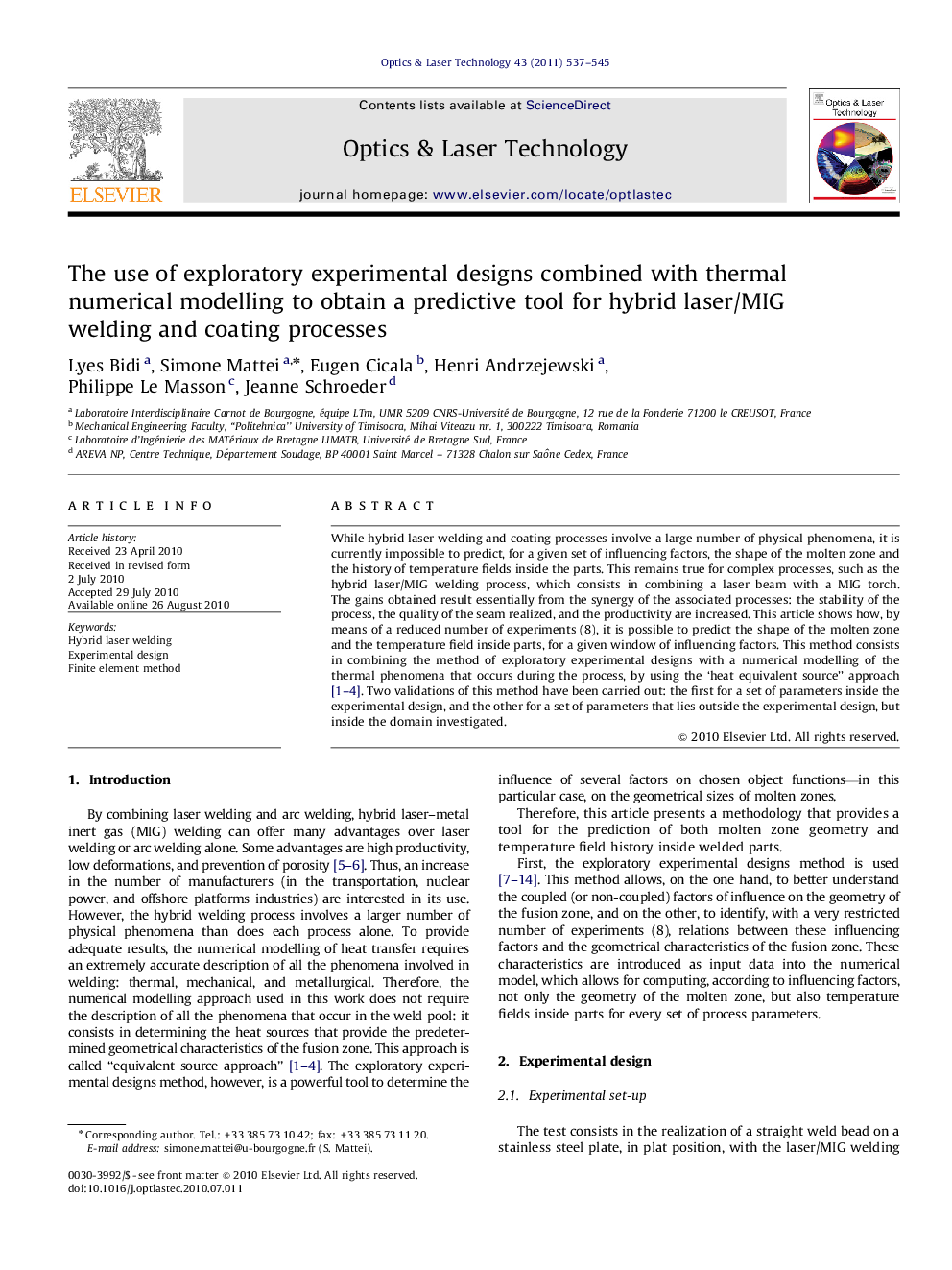| Article ID | Journal | Published Year | Pages | File Type |
|---|---|---|---|---|
| 733900 | Optics & Laser Technology | 2011 | 9 Pages |
While hybrid laser welding and coating processes involve a large number of physical phenomena, it is currently impossible to predict, for a given set of influencing factors, the shape of the molten zone and the history of temperature fields inside the parts. This remains true for complex processes, such as the hybrid laser/MIG welding process, which consists in combining a laser beam with a MIG torch. The gains obtained result essentially from the synergy of the associated processes: the stability of the process, the quality of the seam realized, and the productivity are increased. This article shows how, by means of a reduced number of experiments (8), it is possible to predict the shape of the molten zone and the temperature field inside parts, for a given window of influencing factors. This method consists in combining the method of exploratory experimental designs with a numerical modelling of the thermal phenomena that occurs during the process, by using the ‘heat equivalent source” approach [1], [2], [3] and [4]. Two validations of this method have been carried out: the first for a set of parameters inside the experimental design, and the other for a set of parameters that lies outside the experimental design, but inside the domain investigated.
